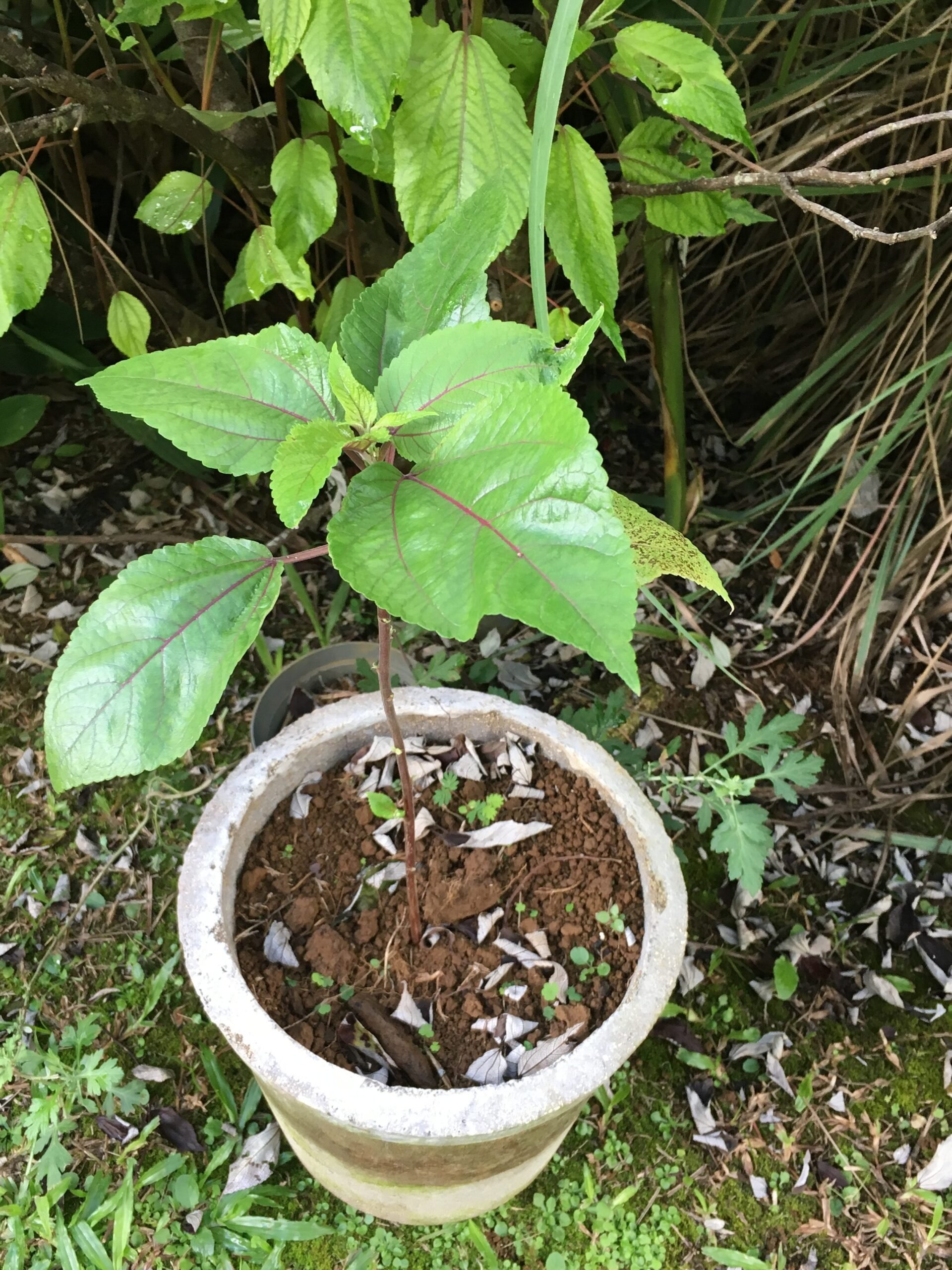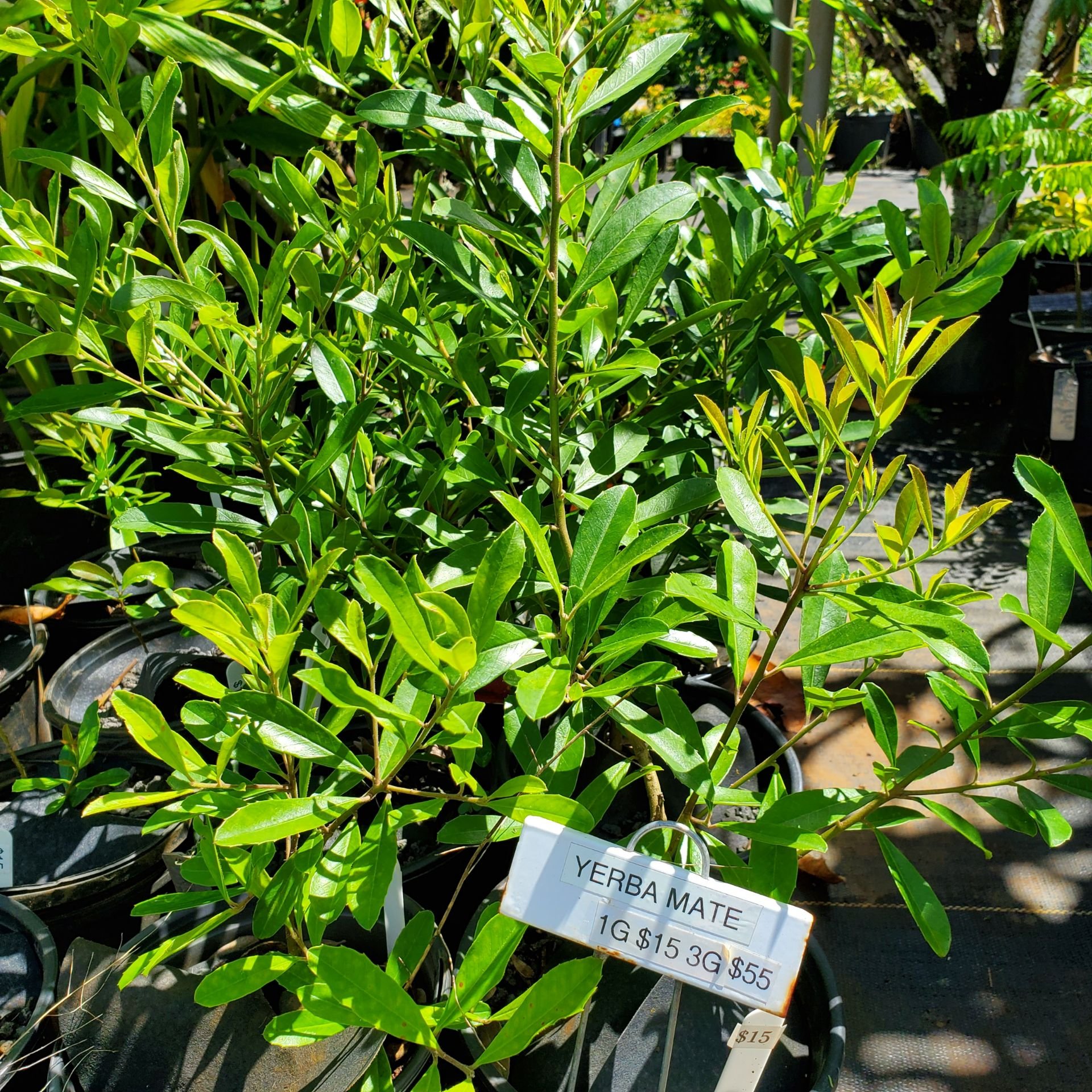Grow Your Own Tea Garden
Have you ever wanted to grow your own tea garden? Learning about the benefits, finding out the best uses, and deciding which plants are the best for growing, can be quite overwhelming. It’s easy to get lost when you’re navigating the world of medicinal herbs.
Don’t worry though, we’ve compiled a list of the top herbs grown here at the nursery that you can plant in your home garden. Are you ready to fill your herbal medicine cabinet?
Tea is a great way to incorporate these magical herbs into your daily routine. Let’s break down some of these herbs, and learn about the various benefits they have and how you can make them into fresh, revitalizing teas for you to enjoy at home with your family and friends.
Tulsi Basil
Also known as Holy Basil, this herb has a myriad of benefits for the brain and the body. Its flowers, leaves, seeds, and oils can be used to treat anything from an insect bite to malaria. Let’s focus on the leaves. Brewing dried leaves in a tea can help prevent
colds and help relieve congestion.
Tulsi is an adaptogen, making it able to adapt and respond to stressors in the body. It can help to control your cortisol levels and relieve stress. Daily use can also help lower your blood sugar and metabolize carbs and fats in the body, ensuring that the
sugar in your blood is used for energy. Holy Basil has antimicrobial properties that promote oral care, fighting bad bacteria in the mouth and helping to freshen breath as a natural mouthwash.
For maximum benefit, it is recommended to drink on an empty stomach. If all those benefits sound good to you, let’s get brewing!
Pick some leaves from your Tulsi basil.
Spread them out on a clean dish towel or drying rack and allow to wilt for a full day.
Place the whole leaves in a canning jar and add hot water, about 190 degrees but not boiling.
Cover the jar and steep for 15 minutes (which will allow the water to capture all of the oils).
Straining not necessary, allow to cool or pour over ice and enjoy!
Tulsi harvest
Mamaki
If you’re looking for a native plant with traditional healing powers, Mamaki is the one. Mamaki is endemic to Hawai’i and has been used for centuries for its medicinal properties.
Hawaiians utilized every part of the plant for various healing benefits. The leaves support the immune system by opening the lungs and respiratory system to relieve everything from allergies to VOG. Mamaki tea can be used as a tonic to aid depression, lethargy, and fatigue. It is also believed to be a detox, aiding the stomach, liver, and intestines. This Native herb is high in antioxidants and can help lower blood pressure, reduce cholesterol, and soothe the nervous system. My favorite thing about Mamaki, is that it also builds and cleanses the blood.
Brewing is simple.
The leaves can be brewed fresh or dried. Take about 6 leaves per cup of water for your tea.
Pour hot but not boiling water over the leaves, and steep for about 10 minutes or overnight to get a nice red color.
Strain out the leaves and enjoy. Brewing longer will produce a stronger tea, while brewing shorter will leave a more mild flavor.
Mamaki keiki
Lemongrass
Often used in Thai cuisine, lemongrass has been known to have health benefits from anti inflammatory properties to anti cancer properties. Lemongrass also has antimicrobial properties that can treat oral infections and fight tooth decay.
Lemongrass has been known to reduce the risk of certain cancers, promote healthy digestion, and act as a diuretic and detox. Studies have also shown that it has the potential to help lower blood pressure and regulate cholesterol. It can also be a natural remedy during menstruation, relieving period symptoms like cramps, bloating, and hot flashes. I personally like it because it has a calming and relaxing effect when I drink it.
Now for the brewing.
Cut one to three teaspoons of fresh or dried lemongrass.
Pour one cup boiling water over the grass and allow to steep for at least 5 minutes.
Strain the tea and enjoy hot or iced!
Full grown lemongrass
Roselle Hibiscus
Hibiscus tea is very popular in small town and big brand coffee shops for good reason! The daily benefits, its delicious cranberry-like flavor and stunning deep pink color will have you addicted.
Daily consumption can help reduce systolic and diastolic blood pressure and promote good cholesterol. Weight management is another major benefit of regularly drinking roselle tea, helping the body get rid of excess weight. It’s high in antioxidants and helps reduce inflammation.
If you’re looking for an evening sleepy time tea, Roselle is a great option. Naturally caffeine-free and containing melatonin, it may help you sleep better.
Now let’s get brewing.
Remove the calyx from your roselle plant about 10 days after the bloom appears.
Clip off from the stem and then clip the end of the calyx where the stem is attached.
Remove the seeds from the calyx and pull the flesh of the calyx apart before rinsing.
Add water and roselle to a pot. Use 8 cups of water to 2 cups roselle.
Bring to a boil, then remove from heat and let steep for 15 minutes.
Strain into a pitcher and enjoy as is or add honey and lemon to your liking.
Drink hot or iced!
Roselle hibiscus harvest
Yerba Mate
If you’re looking for an herbal alternative to your morning cup of coffee, Yerba mate is for you. It naturally contains caffeine and can help boost energy levels. Compared to 85 milligrams of caffeine in your typical cup of coffee, Yerba mate contains 78 milligrams.
On top of containing antioxidants and vital vitamins and minerals, Yerba mate is believed to lower the risk of neurological diseases that affect the nervous system. The antioxidants help lower oxidative stress which can aid in lowering your chance of neurological disorders.
The high levels of saponins help fight inflammation. For those who enjoy Yerba mate, brewing is a daily ritual.
Let’s get to the harvest and brewing instructions.
The leaves can be harvested year round and dried before brewing. Tender stems can also be harvested and dried to be brewed along with the leaves.
Allow to air dry for about a week or use a dehydrator if you have one.
Crush the leaves before pouring hot water over the leaves.
The temperature range of the steeping water is vital: if the water is too hot, the tannins will be extracted too quickly, leaving a bitter taste. The temperature of the water should be between 160-180 degrees F. Never pour boiling water over the leaves.
Yerba mate is traditionally brewed in a special gourd called a mate and sipped through a metal straw called a bombilla.
A french press or tea steeper will also do. Steep for 3 to 5 minutes and enjoy!
The leaves can be re-steeped multiple times to be enjoyed as much as you desire.
It’s Tea Time!
Now that we’ve covered the benefits of these amazing herbs and how to brew them into the perfect tea, it’s time to grow your favorites at home to use as part of your morning, afternoon, or nighttime ritual.
*Remember to advise a doctor before making any changes to your diet.
Sources:
https://www.ncbi.nlm.nih.gov/pmc/articles/PMC4296439/
https://foodinjars.com/recipe/make-fresh-tulsi-tea/
https://www.healthline.com/health/food-nutrition/lemongrass-tea#use
https://simplymadehomestead.com/how-to-make-delicious-hibiscus-roselle-tea/
https://www.ohhowcivilized.com/yerba-mate/
https://static1.squarespace.com/static/52f70946e4b045fae91325c9/t/56eaca2c62cd946d4c
7dcd54/1458227765602/Yerba+Mate+Care+Guide+3-16.pdf
https://homeguides.sfgate.com/how-to-use-hawaiian-mamaki-13428536.html








